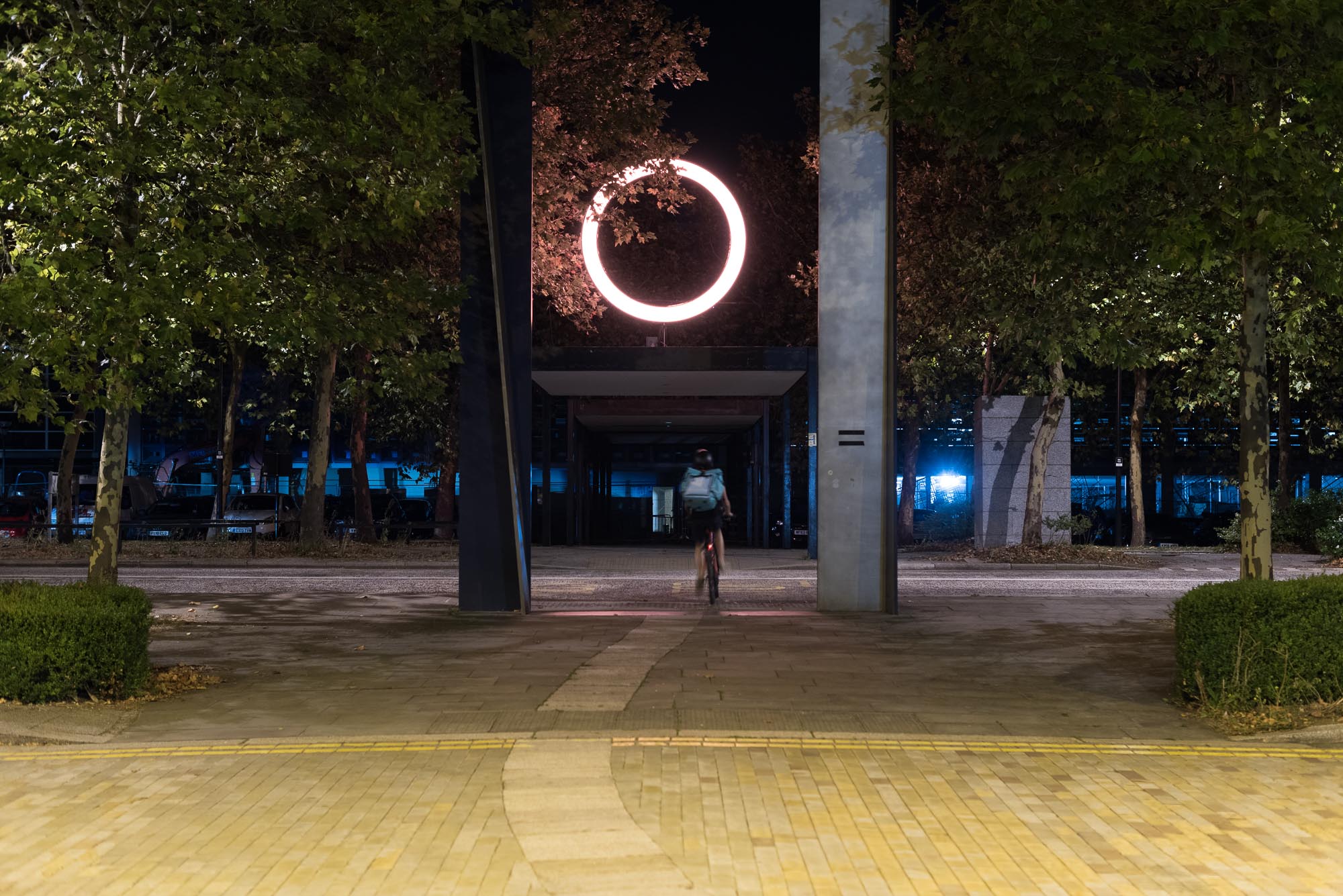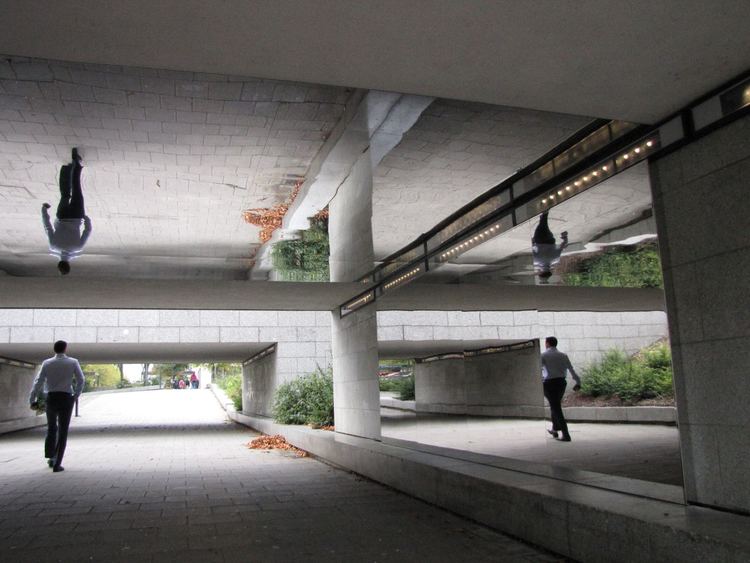The artists selected for this programme interrogate the interface between the built environment and its society. Many of the artists destabilise the modernist utopian aspirations that have conjoined post wars artistic genres of minimalist and formalism with their counterparts in city planning. Whilst the porte-cocheres have a practical role, they have not been constructed in relation to real need, but rather to an aesthetic rational, leaving many of the porte cocheres unused. The artists question the automatic presumption that our urban design is truly well considered and necessary, by subverting these designs and their contexts, compounding traditional distinctions between art, design and engineering.
Michel de Broin Tortoise
Tortoise uses 300 miniature Porte Cocheres within the artwork, building on their concept of protection for the wandering pedestrian from the weather. The work suggests a scenario where all the existing Porte Cocheres have uprooted themselves and reconfigured into a new fictional configuration, the formal approach of which is inspired by the Roman ‘tortoise formation’, a protective strategy. ‘By facing out, the Porte Cocheres that were once a place for encounter, have become a dark inaccessible inner space. The sculpture broadly refers to the utopian aspirations of Milton Keynes, which like the tortoises, are now becoming an endangered species, and we must therefore protect them in these changing environments.’
David Batchelor Chromochochere
For many years a clock has existed as a kinetic work of art on church towers, railway stations civic and other buildings in towns such as Milton Keynes. In an age of cheap watches and hand-held digital devices, the public function of time telling has been made largely redundant. ‘Chromocochere is a largescale digital clock and a constantly changing spectrum of vibrant colour. Over the course of an hour the circular work gradually and imperceptibly moves through the colour spectrum. The circular form of the work refers both to the classic shape of a traditional clock but it also refers to the colour circle, which was first developed by Isaac Newton in his analysis of the colour spectrum in 1704.
Sam Jacob MK Menhir










